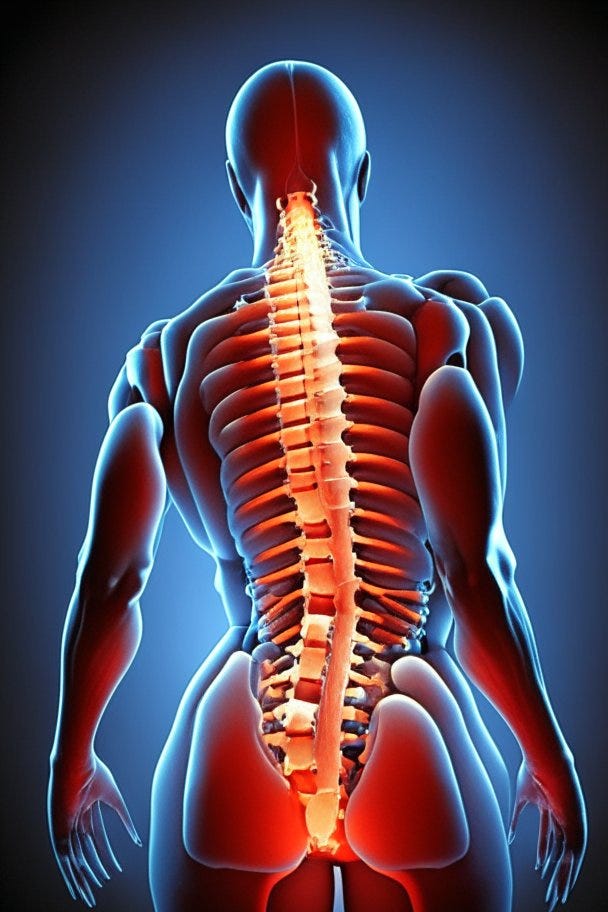Strategies for Living with Chronic Back Pain



Living with chronic back pain can be a frustrating and exhausting experience. Whether your pain is caused by a herniated disc, arthritis, or another condition, it can impact your daily activities, disrupt your sleep, and affect your mood. However, there are strategies you can use to manage your symptoms and improve your quality of life. In this article, we’ll discuss coping techniques, medical treatments, and lifestyle modifications that can help you live well with chronic back pain.
Coping Strategies for Chronic Pain
Managing chronic pain requires a multi-faceted approach that includes physical, emotional, and behavioral strategies. Here are some coping techniques you can try:
Physical Therapy and Exercise
Physical therapy can be a highly effective treatment for chronic back pain. A skilled physical therapist can create an individualized exercise program that targets your specific pain triggers and helps you build strength and flexibility. Exercise can also help reduce stress, improve your mood, and promote better sleep.
In addition to physical therapy, there are several types of exercise that may be beneficial for people with chronic back pain. These include:

- Aerobic exercise: Activities like walking, swimming, or cycling can improve cardiovascular health and help maintain a healthy weight, which can reduce stress on the spine.
- Core-strengthening exercises: Exercises that target the muscles of the abdomen and lower back can help improve posture and reduce strain on the spine.
- Flexibility exercises: Activities like yoga or stretching can improve range of motion and reduce stiffness.
Mindfulness and Relaxation Techniques
Stress and anxiety can exacerbate chronic pain, so finding ways to manage your stress levels is crucial. Mindfulness and relaxation techniques can help you calm your mind and reduce tension in your body. Some techniques to try include:

- Deep breathing exercises: Slow, deep breaths can help reduce muscle tension and promote relaxation.
- Meditation: Meditation can help you focus your attention and quiet your mind.
- Guided imagery: Imagining a peaceful scene or using visualization can help distract from pain and promote relaxation.
- Progressive muscle relaxation: Tensing and then relaxing different muscle groups can help release tension and reduce pain.
Medication Management
Medications can be a helpful tool for managing chronic back pain, but they should be used carefully and under the guidance of a healthcare professional. Some types of medications that may be used to treat chronic back pain include:
- Over-the-counter pain relievers: Nonsteroidal anti-inflammatory drugs (NSAIDs) like ibuprofen or naproxen can help reduce inflammation and relieve pain.
- Prescription medications: Stronger pain medications like opioids may be prescribed for severe pain, but they should be used cautiously due to the risk of addiction and side effects.
- Antidepressants: Some types of antidepressants can be helpful in reducing chronic pain, particularly when used in low doses.
- Muscle relaxants: These medications can help alleviate muscle spasms and reduce pain.
Alternative Therapies
In addition to traditional medical treatments, alternative therapies may also be helpful for managing chronic back pain. Some options to consider include:

- Acupuncture: This ancient Chinese practice involves the insertion of thin needles into specific points on the body to alleviate pain and improve overall health.
- Massage therapy: Massage can help relieve muscle tension and promote relaxation.
- Chiropractic care: Chiropractors use manual manipulation to realign the spine and alleviate pain.
- Biofeedback: This technique involves using electronic sensors to monitor bodily functions like heart rate and blood pressure, with the goal of learning to control these functions and reduce pain.
Support Groups
Living with chronic pain can be isolating, so joining a support group can be a helpful way to connect with others who are going through similar experiences. Support groups provide a safe and supportive environment to share your feelings, learn coping strategies, and receive emotional support.
Sleep Hygiene
Getting enough sleep is crucial for managing chronic pain, as sleep deprivation can exacerbate pain symptoms. Improving your sleep hygiene can help you get better quality sleep and reduce pain. Some tips for better sleep hygiene include:
- Establishing a consistent sleep schedule
- Creating a relaxing bedtime routine
- Limiting caffeine and alcohol intake
- Making sure your sleep environment is comfortable and conducive to sleep
Pain Triggers and Pain Journaling
Identifying your pain triggers can help you avoid or manage activities that exacerbate your pain. Keeping a pain journal can be a helpful tool for tracking your symptoms and identifying patterns. In your pain journal, make note of:
- Activities that worsen your pain
- Activities that alleviate your pain
- Emotional factors that affect your pain (such as stress or anxiety)
Graded Exposure
Graded exposure involves gradually increasing your exposure to activities that cause pain or anxiety. This technique can help you build confidence and reduce fear around activities that may have become associated with pain. A physical therapist or occupational therapist can help you develop a graded exposure plan that is tailored to your needs and goals.
Cognitive-Behavioral Therapy
Cognitive-behavioral therapy (CBT) is a type of talk therapy that focuses on changing negative thoughts and behaviors that may be contributing to your pain. CBT can help you develop coping strategies, improve your mood, and reduce pain.
Occupational Therapy
Occupational therapy can be helpful for managing chronic back pain by teaching you how to perform daily activities in ways that are less likely to exacerbate your pain. An occupational therapist can help you modify your home environment, suggest assistive devices, and teach you techniques for conserving energy and reducing pain.
Pain Education
Educating yourself about your condition and the mechanisms of pain can help you better understand and manage your symptoms. Ask your healthcare provider for educational resources or consider attending a pain management program.
Assistive Devices
Assistive devices can help reduce strain on your back and make daily activities easier to perform. Some examples of assistive devices include:
- Lumbar support cushions or braces
- Ergonomic chairs or desks
- Shoe inserts or orthotics
- Mobility aids like canes or walkers
Lifestyle Modifications
Making lifestyle modifications can help reduce pain and improve overall health. Some modifications to consider include:
- Maintaining a healthy weight
- Eating a nutritious diet
- Quitting smoking
- Avoiding alcohol or limiting intake
- Engaging in stress-reducing activities like yoga or meditation
Self-Care
Finally, self-care is an essential component of managing chronic back pain. Taking care of your physical, emotional, and mental health can help you cope with your symptoms and improve your quality of life. Some self-care practices to try include:
- Engaging in enjoyable activities
- Setting realistic goals
- Practicing self-compassion
- Building a support network of friends and loved ones
- Seeking professional help if needed
How to Help Someone with Chronic Back Pain
If you have a loved one who is living with chronic back pain, there are several things you can do to support them. Here are some tips:
- Listen actively and validate their feelings
- Offer practical help with household tasks or errands
- Accompany them to medical appointments or offer to take notes
- Encourage them to seek professional help if needed
- Avoid giving unsolicited advice or minimizing their pain
How Doctors Treat Back Pain
When it comes to treating chronic back pain, there is no one-size-fits-all approach. Depending on the cause and severity of your pain, your healthcare provider may recommend a variety of treatments, such as:
- Medication management: Pain-relieving medications, such as nonsteroidal anti-inflammatory drugs (NSAIDs), muscle relaxants, or opioids, may be prescribed to manage pain.
- Physical therapy: A physical therapist can help you strengthen your muscles, improve your range of motion, and reduce pain.
- Exercise: Low-impact exercises, such as swimming or walking, can help reduce pain and improve overall fitness.
- Mindfulness and relaxation techniques: Practices like meditation, deep breathing, or progressive muscle relaxation can help reduce stress and improve pain symptoms.
- Alternative therapies: Some alternative therapies, such as acupuncture or chiropractic care, may be helpful for managing chronic back pain.
- Surgery: In some cases, surgery may be recommended to address underlying issues causing chronic back pain.
It’s important to work with your healthcare provider to determine the best treatment plan for your individual needs.
Conclusion
Living with chronic back pain can be challenging, but there are many strategies that can help manage pain and improve quality of life. Coping techniques such as physical therapy, exercise, mindfulness, and relaxation techniques can help reduce pain and improve overall health. Medication management, alternative therapies, and surgery may also be recommended in some cases. It’s important to work with your healthcare provider and develop a comprehensive treatment plan that works best for your individual needs. Remember, self-care and support from loved ones are also essential components of managing chronic back pain.
Here are some useful information you can check to help you out:
How to Fix “Low Back” Pain
(INSTANTLY!)
14,527+ Use Relaxing Movement Daily To Improve Posture and Reduce Back Pain
Dr. Steve Young DPT, MPT, CSCS has 31 years experience and is one of the world’s leading Back pain specialists and injury prevention experts
He’s helped more than 31,591 people to completely eliminate their joint pain. His clients include every-day people, working with world’s top athletes from NFL footballers, to NBA players, MMA fighters and Hollywood actors who are performing physical roles and even nursing home residents.
Comments
Post a Comment